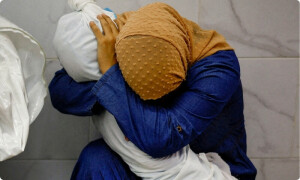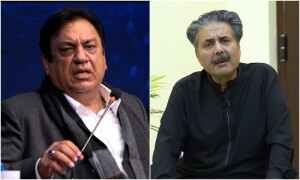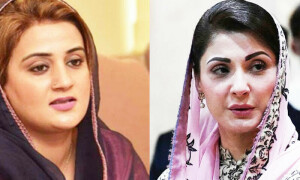GAZA CITY: Clashes erupted as tens of thousands of Gazans marched near the Israeli border in a major protest on Friday, leaving 15 Palestinians dead and hundreds more wounded in the conflict’s worst single day of violence since the 2014 Gaza war.
Late in the day, Israel’s military targeted three Hamas sites in the Gaza Strip with tank fire and an air strike after what it said was an attempted shooting attack against soldiers along the border that caused no injuries.
Protesters, including women and children, had earlier gathered at multiple sites throughout the blockaded territory, which is flanked by Israel along its eastern and northern borders.
Smaller numbers approached within a few hundred metres of the heavily fortified border fence, with Israeli troops using tear gas and live fire to force them back.
Israeli security forces also used a drone to fire tear gas towards those along the border, in one of the first uses of the device, a police spokesman said.
Health officials say 1,400 people wounded by live gunfire, rubber bullets
The health ministry in Gaza said 15 Palestinians were killed by Israeli forces.
More than 1,400 were injured, including 758 by live fire, with the remainder hurt by rubber bullets and tear gas inhalation, it said.
‘Disproportionate force’
Palestinians accused Israel of using disproportionate force, as did Turkey.
Egypt, which has a border with Gaza, issued a foreign ministry statement saying it “denounces the use of force against civilians in the occupied Palestinian territories”.
The Cairo-based Arab League condemned Israel’s “savagery”.
Israel’s military alleged that the main protests were being used as cover by militants to either break through the border or carry out attacks. “It is not a peaceful demonstration,” an Israeli military official claimed.
“There was no small number of attempts to damage the fence and cross” the border, she added.
The army said it estimated some 30,000 demonstrators were taking part in the protests.
“Rioters are rolling burning tyres and hurling firebombs and rocks at the security fence and at [Israeli] troops, who are responding with riot dispersal means and firing towards main instigators,” it said.
Protesters were demanding hundreds of thousands of Palestinian refugees who fled or were expelled during the war surrounding Israel’s creation in 1948 be allowed to return.
Hamas leader Ismail Haniya attended the protest, believed to be the first time he had gone so close to the border in years.
Hamas and Israel have fought three wars since 2008, the most recent of which in 2014 ended with a fragile truce.
Far smaller protests broke out in parts of the occupied West Bank.
On Friday evening, Gazan leaders called on protesters to retreat from the border area until Saturday, with the demonstration planned to extend six weeks, until the inauguration of the new US embassy in Jerusalem around May 14.
Palestinian President Mahmud Abbas declared Saturday a day of national mourning.
The upcoming embassy move has added to tensions surrounding the march.
US President Donald Trump’s recognition of Jerusalem as Israel’s capital in December has infuriated Palestinians, who claim its annexed eastern sector as the capital of their future state.
The protest also began as Jewish Israelis were to mark the Passover holiday.
Israel announced a “closed military zone in the area surrounding the Gaza Strip”, accusing its rulers Hamas of using the lives of civilians “for the purpose of terror”.
It deployed reinforcements, including more than 100 special forces snipers, for fear of mass attempts to break through the security fence.
Israeli Defence Minister Avigdor Lieberman said in a tweet directed to Gazans in both Hebrew and Arabic that “Hamas’s leadership is playing with your life”.
Rare family protest
Protests along the border are common, often culminating in young Palestinian men throwing stones at Israeli soldiers who respond with tear gas, and rubber and live bullets.
The “March of Return” protest is different because it is intended to include families with women and children camping near the border for weeks.
Five main camp sites have been set up spanning the length of the frontier, from near the Erez border crossing in the north to Rafah where it meets the Egyptian border in the south.
Cultural events were planned in the larger communal tents, including traditional Palestinian dabke dancing, while tens of thousands of meals were to be handed out on Friday, organisers said.
A young couple were married near one of the camps on Thursday evening.
Saeed Juniya had erected a small tent a few hundred metres from the border fence east of Gaza City, where he was accompanied by his wife and children.
Published in Dawn, March 31st, 2018














































Dear visitor, the comments section is undergoing an overhaul and will return soon.